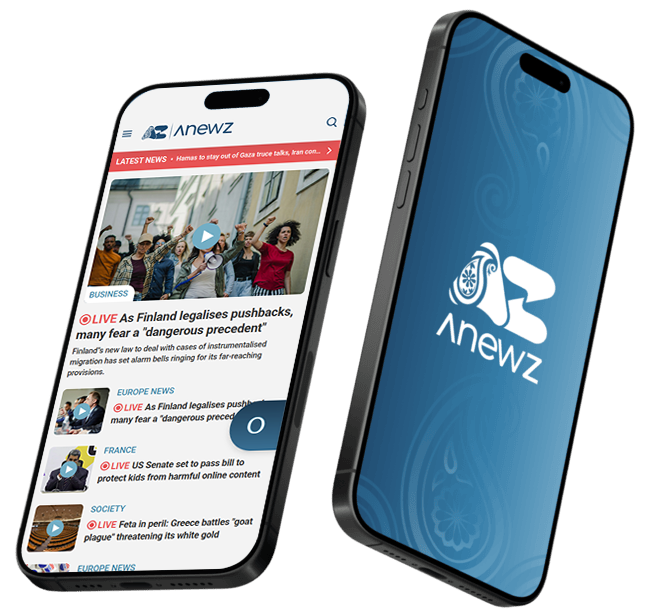U.S. greenlights $320M arms deals for Ukraine
The U.S. has approved major arms deals for Ukraine, including air defense systems and armored vehicles, totaling over $320 million, in a continued eff...
The announcement triggered a sharp rally in Japanese equity markets. Shares in major automakers surged: Toyota rose over 14%, Honda gained 11%, while Mazda and Subaru both advanced more than 17%. Japan’s Topix index closed up 3.2%. The yen weakened slightly, trading at ¥146.8 against the dollar.
The United States and Japan have concluded a major trade agreement that reduces tariffs on Japanese automobile imports from 25% to 15% and secures a $550 billion Japanese investment package into key U.S. industries.
The deal was finalised following high-level talks at the White House between President Donald Trump and Japan’s lead negotiator, Ryosei Akazawa. As part of the agreement, a planned round of U.S. tariffs, scheduled to take effect on 1 August, has been cancelled.
President Trump described the agreement as “the largest TRADE DEAL in history with Japan,” adding that it would improve U.S. access to Japan’s market for vehicles, rice, and other agricultural goods. In exchange, Japan will face a 15% tariff on exports to the U.S.—lower than the previously threatened 25%, but higher than the 10% interim rate applied during negotiations.
Japanese Prime Minister Shigeru Ishiba welcomed the outcome, noting that the auto tariff reduction came without quotas and represents “the lowest figure among countries with a trade surplus with the U.S.”
The announcement triggered a sharp rally in Japanese equity markets. Shares in major automakers surged: Toyota rose over 14%, Honda gained 11%, while Mazda and Subaru both advanced more than 17%. Japan’s Topix index closed up 3.2%. The yen weakened slightly, trading at ¥146.8 against the dollar.
The agreement comes ahead of a self-imposed 1 August deadline by the Trump administration to conclude bilateral tariff talks. The deadline follows a series of reciprocal tariff threats issued in April, introducing a baseline 10% tariff on imports, with higher rates for selected countries. According to U.S. Commerce Secretary Howard Lutnick, countries that do not finalise agreements by the deadline will face elevated tariffs.
President Trump said the agreement includes a $550 billion Japanese investment commitment targeting critical U.S. sectors, including semiconductors, shipbuilding, aviation, and energy.
“Japan will invest, at my direction, $550 Billion Dollars into the United States,” Trump wrote on Truth Social. “We will receive 90% of the profits.”
Akazawa confirmed that the deal does not address U.S. tariffs on steel and aluminium, which remain at 50%, and contains no provisions on defence spending. He held eight rounds of negotiations with senior U.S. officials, including Commerce Secretary Lutnick and Treasury Secretary Scott Bessent.
The automotive sector—central to Japan’s economy and its $63 billion trade surplus with the U.S.—was a focal point of the talks. Japanese manufacturers broadly welcomed the outcome. However, some American industry representatives raised concerns.
“Any deal that charges a lower tariff for Japanese imports with virtually no U.S. content than the tariff imposed on North American-built vehicles is a bad deal for U.S. industry,” said Matt Blunt, President of the American Automotive Policy Council.
The administration is seeking similar agreements with several countries ahead of the deadline. Framework deals have already been announced with the United Kingdom, Vietnam, Indonesia, and the Philippines, while tariff de-escalation talks with China are ongoing.
Trump also confirmed that Japan had agreed to form a joint venture with the U.S. on a long-proposed liquefied natural gas project in Alaska.
The deal was concluded just days after Japan’s ruling party suffered a setback in upper house elections. Japanese media have reported that Prime Minister Ishiba may step down in the coming weeks, though he has publicly denied such plans.
The world’s biggest dance music festival faces an unexpected setback as a fire destroys its main stage, prompting a last-minute response from organisers determined to keep the party alive in Boom, Belgium.
Australian researchers have created a groundbreaking “biological AI” platform that could revolutionise drug discovery by rapidly evolving molecules within mammalian cells.
Australian researchers have pioneered a low-cost and scalable plasma-based method to produce ammonia gas directly from air, offering a green alternative to the traditional fossil fuel-dependent Haber-Bosch process.
A series of earthquakes have struck Guatemala on Tuesday afternoon, leading authorities to advise residents to evacuate from buildings as a precaution against possible aftershocks.
The U.S. economy faces a 40% risk of recession in the second half of 2025, JP Morgan analysts said on Wednesday, citing rising tariffs and stagflation concerns.
Inflation is when prices rise, reducing the purchasing power of your money. When it happens slowly, it’s manageable. But when it surges, it can disrupt savings, wages, business planning, and economic growth. That’s when central banks step in.
Spy cockroaches, tank-like AI robots, and battlefield drones are at the heart of Germany’s ambitious plan to reinvent warfare, as Europe ramps up defence spending in response to Russia’s invasion of Ukraine.
Türkiye has secured €2.4 billion ($2.8 billion) in green financing for a railway project aimed at establishing a direct rail connection to Azerbaijan's Nakhchivan exclave.
UK has announced fresh sanctions to crack down Russia's so-called "shadow fleet", targeting 135 oil tankers along with two Russian firms, shipping company Intershipping Services LLC and oil trader Litasco Middle East DMCC.
China’s June exports of rare-earth permanent magnets to the U.S. have skyrocketed by 660%, reaching 353 metric tons, as Beijing lifted earlier restrictions under a new trade pact—though volumes remain below June 2024 levels amid ongoing supply chain recovery.
You can download the AnewZ application from Play Store and the App Store.

What is your opinion on this topic?
Leave the first comment